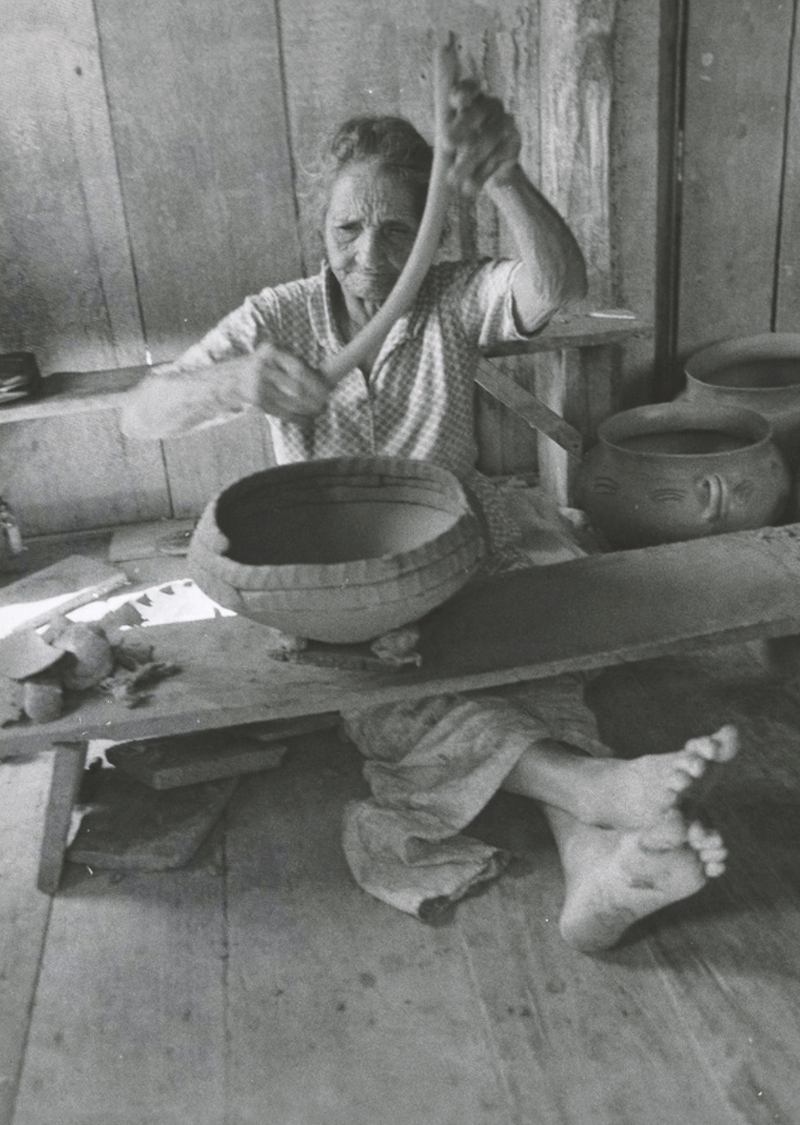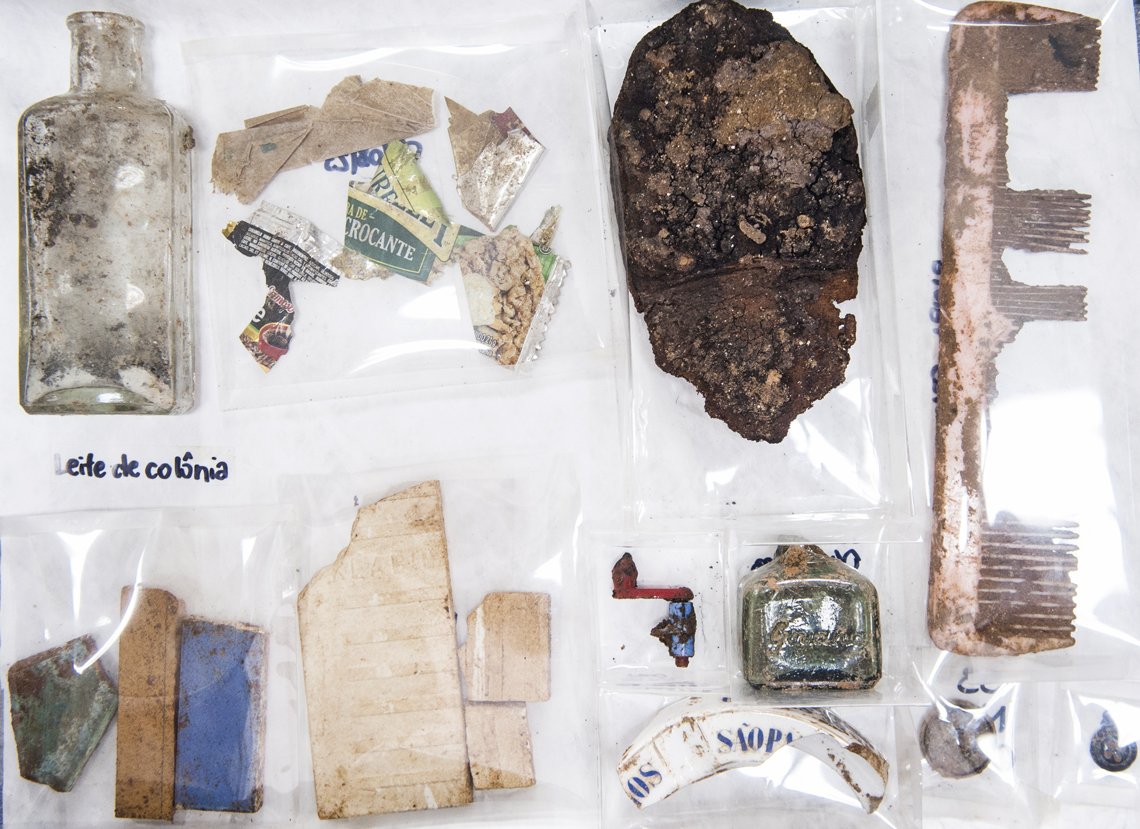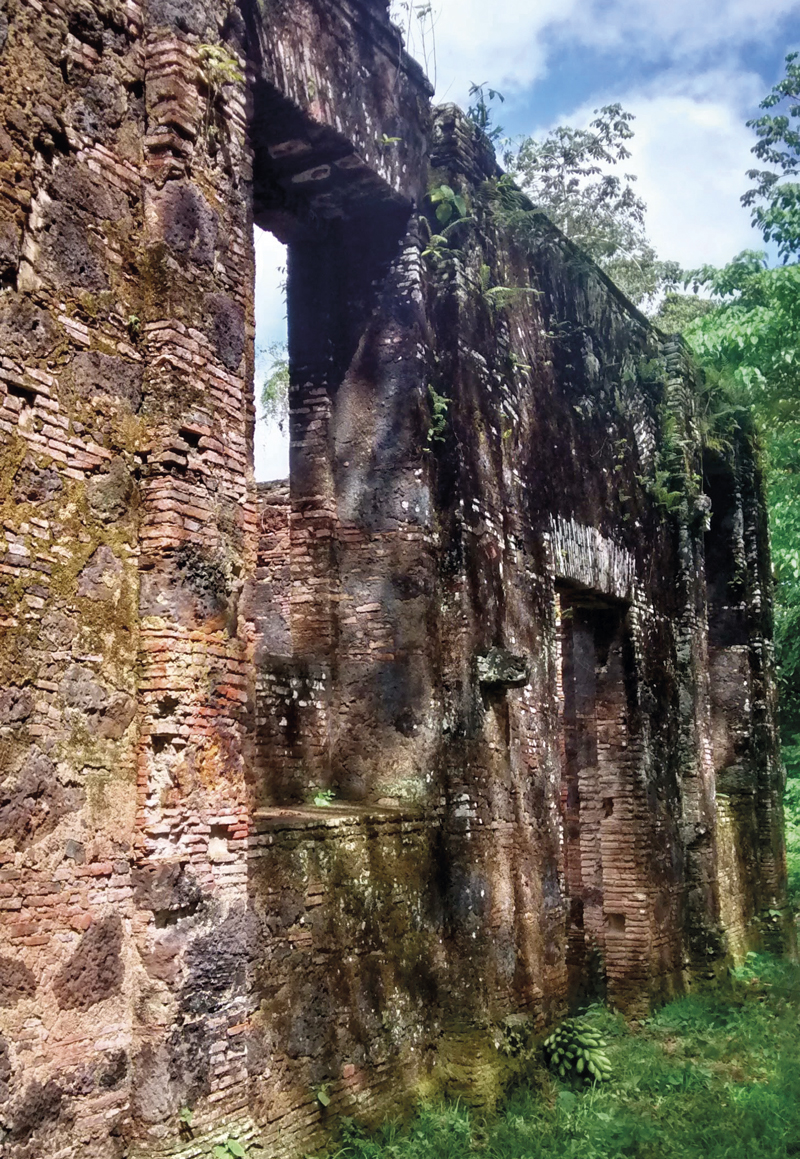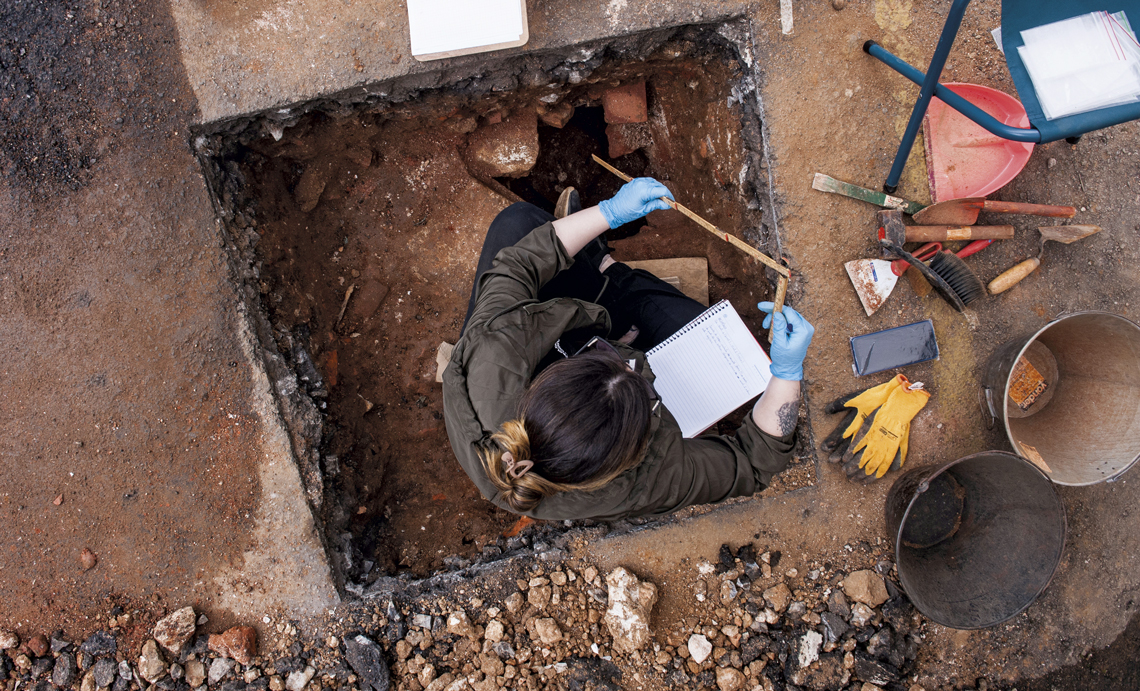In an article published during the Second World War, British writer George Orwell (1903–1950) wrote a sentence that would become famous: “History is written by the victors.” In general, written records reflect the point of view of the elites, from the official documentation of public administration to the great epic poems. But it is not only with texts that history can be written: the material traces left by human groups enable us to talk about the past in another way, including subaltern or excluded groups or those without literary tradition.
A field that has gained traction in Brazil since the 1990s, historic archaeology relies on both textual records and physical remains. The Historical Archaeology Week of the National Museum, in Rio de Janeiro, took place in October last year, uniting 73 professionals from the area. In 2024, according to one of the organizers of the event, archaeologist Marcos André Torres de Souza of the National Museum at the Federal University of Rio de Janeiro (UFRJ), the Brazilian Society of Historical Archaeology is expected to be founded, the first president of which will be archaeologist Luis Cláudio Symanski, of the Federal University of Minas Gerais (UFMG).
Souza and Symanski are the editors of the book Arqueologia histórica brasileira (Brazilian historical archaeology; Editora UFMG, 2022). With 22 chapters, the work provides an overview of the studies carried out in all regions of the country. The texts, written by 29 researchers, cover a diverse range of subjects including the relationship of Indigenous people with European colonizers in the sixteenth century, the implantation of quilombos in both the countryside and cities, the impact of large-scale monoculture on biomes such as the Amazon, the environmental and social effects of mining, and the torture centers in the military dictatorship (1964–1985).
The definition of historical archaeology is broad. According to Souza, the term is mostly used on the American continent to refer to excavations that study the period prior to the arrival of the Europeans, as opposed to archaeology which can be called prehistoric, precolonial, or pre-Columbian. According to historian Adriana Schmidt Dias, of the Federal University of Rio Grande do Sul (UFRGS), the distinction between history and prehistory in archaeology originated in the north of Europe, in the nineteenth century, when sites of the peoples from that region who preceded the Roman conquest were excavated.

Plácido de Campos Júnior / São Paulo Museum of Image and Sound
In the 1970s, a potter from Iguape, São Paulo, makes a piece using the chordal technique, a Tupiniquim legacy from the colonial periodPlácido de Campos Júnior / São Paulo Museum of Image and SoundIn locations where there is textual documentation going back thousands of years, the denomination is less common. When used, the expression usually refers to the contributions of archaeology to history as a whole, as French archaeologist Alain Dupouy, of Paris 1 Panthéon-Sorbonne University explains. “I understand historical archaeology as the search for a synthesis of those disciplines, a total history, that explores both the archaeological and the textual sources, without hierarchy between them,” Dupouy told Pesquisa FAPESP.
Archaeologist Andrés Zarankin, of UFMG, proposes a third definition, based on the proposals of Canadian archaeologist Charles Orser. Historical archaeology, he argues, is that which “studies the formation process of modern society.” It would be a way of formulating questions guided by current problems. That is why subareas emerge such as the archaeology of capitalism, or of the African diaspora, or even the archaeology of the recent past, which investigates events that took place a few years ago, from the military dictatorship to environmental disasters. Souza, of UFRJ, stresses that the interaction between material culture, written records, and oral interviews has made it possible to “contribute to the long-term histories of Indigenous groups, which span prehistoric and historical archaeology,” in a subfield known as ethnoarchaeology. The same applies for populations of the African diaspora, for which the main form of memory transmission is oral, remembers Dias, who has a PhD in archaeology from the University of São Paulo (USP).
If documents and interviews reveal only parts of the stories, this is also true for material culture, according to archaeologist Marianne Sallum. A postdoctoral fellow at the Laboratory for Interdisciplinary Research in Evolution, Culture, and Environment of the Museum of Archaeology and Ethnology (LEVOC-MAE-USP), Sallum is currently a visiting researcher at the University of Massachusetts (UMASS), in Boston, USA, with funding from FAPESP. Through the fragments of vessels and pots, found in excavations from the sixteenth and seventeenth centuries, Sallum and fellow archaeologist Francisco Silva Noelli, doing a PhD in the Center of Archaeology of the University of Lisbon (UNIARQ), concluded that the arrival of the Europeans in the sixteenth century to the land which is today São Paulo did not lead to the extinction or acculturation of the Tupiniquim Indigenous people. The research is a partnership between USP, UMASS-Boston, and UNIARQ, where Sallum is a research associate.
On the contrary, a material culture developed with its own characteristics that the researchers named “cerâmica paulista” [ceramics from São Paulo]. Sallum remembers that the Portuguese and the Tupiniquim already had a 60-year alliance in the war against the French and the Tamoio, between 1565 and 1574, which included marriages between people from the two groups. From these relationships, pottery practices resulted which are still applied today, made by women, part of which claim the ancestral legacy of the Tupiniquim way of making.
However, the pure analysis of the materials, without considering the local history and articulation of the practices, does not reveal this Indigenous continuity, because the ornaments and shapes of the vessels are similar to those found in Portuguese production. This context led archaeology of the twentieth century to suggest that cerâmica paulista was an appropriation and transformation of common Portuguese ceramic by Tupiniquim women, says Sallum, who with Noelli writes the chapter in the book “Povos indígenas e arqueologia do colonialismo no Brasil” (Indigenous peoples and the archaeology of colonialism in Brazil).

Léo Ramos Chaves / Pesquisa Fapesp
Part of the items found by researchers in the excavations where the DOI-CODI operated in São PauloLéo Ramos Chaves / Pesquisa FapespThe archaeologist has been investigating the topic since her PhD, defended in 2018 at MAE-USP. In 2023, she took one more step in the research by publishing an article in the Journal of Social Archeology with Noelli and historian Sílvia Alves Peixoto, who has a PhD in archaeology from the National Museum of UFRJ. In the study, the researchers map the genealogy of two Tupiniquim women born in the captaincy of São Vicente, São Paulo State, in the sixteenth century: Joana Ramalho (c. 1511–1590) and Esperança da Costa (c. 1580–?). With this, they gathered, respectively, the names of five or six generations of Indigenous Tupiniquim women who formed kinship relationships with European—especially Portuguese—men.
Furthermore, the researchers analyzed two communities, made up of Tupiniquim and Europeans, that moved from São Vicente to the coast of Rio de Janeiro. One of them is the fortress on Morro Cara de Cão, created in 1565 by Jorge Ferreira (c. 1508–1575), of Portuguese nationality, to participate in the invasion and conquest of Guanabara bay. Ferreira was married to Joana Ramalho, daughter of Tupiniquim Mbicy (c. 1495–?) and Portuguese father João Ramalho (c. 1493–1580). The Camorim sugarcane mill, in the west zone of Rio de Janeiro, was built by the hands of Gonçalo Correia de Sá (c. 1576–?), who the researchers think descended from Portuguese and Indigenous parents, and his wife, Esperança da Costa.
“The women took care of the food sovereignty, part of the logistics, and there is evidence that they took part in fighting,” says Sallum. The genealogical investigation began in 2020 and is being done using documents such as letters and papers from the public administration. According to the archaeologist, the goal is to collect more data about Tupiniquim men and women to trace histories that were erased by colonialism and racism.
A site that exemplifies how the colonial economy was installed and spread throughout Brazil lies on the outskirts of Belém (state of Pará), according to archaeologist Diogo Menezes Costa, of the Federal University of Pará (UFPA), author of the chapter “Arqueologia histórica na região Norte do Brasil” (Historical archaeology in the North region of Brazil). The Murutucu sugarcane mill, which the UFPA research team has been exploring for around 10 years, was active between the start of the eighteenth century and the first decades of the twentieth century. Besides having been the first excavation where remains of slave quarters were found in the region, the mill also reveals the use of a little-known technology in Brazil.

Diogo M. Costa
Ruins of the Murutucu sugarcane mill, on the outskirts of Belém, Pará StateDiogo M. Costa“Unlike what happened in the sugar mills in the Southeast and Northeast, which used animal or human traction, the milling was powered by the tide,” says Costa. “When the tide rose, the water was dammed. At low tide, the floodgates were open, making the mechanism rotate. It is an old technology, that comes from the Romans, it was used in Ireland and the Portuguese brought it here because the difference in the water level is huge,” he adds. According to the researcher, the mill did not produce for exportation but to supply the internal exchange market in the Amazon with liquor (in this case, bartering between Indigenous people and colonizers), which reveals a little of what the trade circuits in the Colony were like.
Historic archaeology can also investigate events as recent as the environmental disasters of Brumadinho and Mariana, in Minas Gerais, which are already being studied by archaeologists. Another theme belonging to contemporary archaeology emerged in 1984, when the Argentine Forensic Anthropology Team (EAAF) was established to study crimes against humanity committed by the county’s dictatorship (1978–1983). The work contributed to the conviction of leaders of the military regime. In Brazil, in 1996, the EAAF participated in some of the first archaeological excavations in the Araguaia region (State of Tocantins) that tried to reconstruct episodes of the military regime.
According to Zarankin, although studies of this type have occurred in Brazilian universities such as UFMG and the University of Campinas (UNICAMP), they developed more in the neighboring countries than here. Among the reasons, the archaeologist says that until 2020 the researchers were unable to get authorization to visit detention and torture centers. “Today, the field is consolidated across Latin America and has impacted Europe, where the Spanish Civil War [1936–1939] has been heavily researched. In Brazil, we can only study the dictatorship detention centers through interviews with survivors or plans of the locations,” laments Zarankin, author of the chapter “O desenvolvimento da arqueologia da repressão e da resistência no Brasil: Avanços e desafios” (The development of archaeology of repression and resistance in Brazil: Advances and challenges), with archaeologist Caroline Murta Lemos, a PhD student at UNICAMP.
The first study of its kind took place in Belo Horizonte, in 2020, in the regional headquarters of the Department of Political and Social Order (DOPS), which should become a memorial. Since last year, it was the turn of the venue that housed the Department of Information Operations – Center for Internal Defense Operations (DOI-CODI), in the neighborhood of Paraíso, in São Paulo, between the 1960s and 1970s. In both cases, objects and fragments of materials associated with the operations of these spaces were found, corroborating the interviews with survivors. Among them, there are inscriptions on the walls, which appear upon excavating the layers of paint with a scalpel. In the DOI-CODI, the researchers coordinated by archaeologist Cláudia Regina Plens, of the Federal University of São Paulo (UNIFESP), by historian Aline Vieira de Carvalho, of UNICAMP, and by Zarankin, identified bottles of ink from the 1970s used to fill out the prisoners’ files. Also, in the prison in São Paulo, below the current floor, the old wooden tile covering hid stains, which are currently being assessed at UNIFESP. The team wants to discover whether the remains are a biological material, such as blood.
“It is important that these buildings become places of memorial, as has happened in the Navy Mechanics School (ESMA), in Argentina, and in other detention centers,” says Zarankin. Clothing with bullet marks and inscriptions on the walls with cries for help were found there. “The story that these objects tell is powerful and expands the impact of the interviews to make people aware about the dictatorship and the violence, or about the importance of democracy and tolerance,” concludes the archaeologist.
Project
Archaeology of colonialism and persistence: A comparative approach to indigenous practices between São Paulo (Brazil) and New England (USA) (nº 19/17868-0); Grant Mechanism Postdoctoral Fellowship; Supervisor Astolfo Gomes de Mello Araujo (USP); Beneficiary Marianne Sallum; Investment R$203,497.56.
Scientific articles
COSTA, D. M. Arqueologia urbana em Belém do Pará: O estudo de um antroma terrestre entre águas amazônicas. Revista Arqueologia Pública. Vol. 18. 2023.
HISSA, S. B. V. & JACQUES, C. C. Deixado na igreja: Da arqueologia a uma estética do lixo recente. Ponto Urbe. No. 31. 2023.
LIMA, A. L. L. de. Vestígios de um quilombo paulistano: Uma análise da paisagem arqueológica do bairro do Bixiga. Revista Argumentos. Vol. 17, no. 1. 2020.
NOELLI, F. S. & SALLUM, M. et al. Archaeologies of gender, kinship, and mobility in Southeast Brazil: Genealogies of Tupiniquim women and the itinerancy of ceramic practices. Journal of Social Archaeology. Vol. 23, no. 2. 2023.
SALLUM, M. Rethinking Latin American archaeology: “Affective alliances” and traditional community-engagement. Papers from the Institute of Archaeology. Vol. 34, no. 1. 2023.
ZARANKIN, A. & MASS, J. M. L. et al. La sombra del Cóndor: Breve panorama de arqueología de la represión y la resistencia en América del Sur. Revista do Museu de Arqueologia e Etnologia. No. 36. 2021.
Dossier
NOELLI, F. & SALLUM, M. et al. (eds.) Dossiê: Conexões atlânticas: Arqueologias do colonialismo. Cadernos do Lepaarq, vol. 19, no. 37. 2022.
